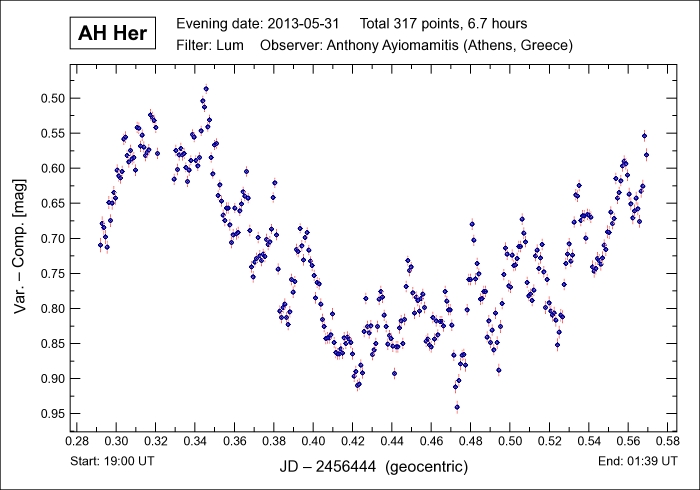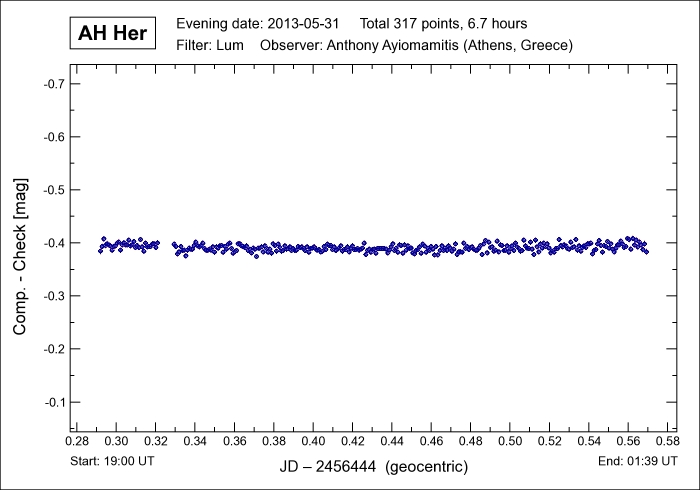
A variable star, as its name suggests, is a star whose magnitude varies intrinsically, in contrast to eclipsing binaries whose magnitude
varies as a result of one star in the binary system eclipsing the other. True variables are one of five types, namely Mira stars, semiregular
stars, cepheids, eruptive variables and, finally, cataclysmic variables. Minimum to maximum magnitude can range from days to many months with
some variables displaying irregular periods.
A popular method for the study of variable stars, particularly short-term variables, is by the use of the technique known as "differential
photometry". Rather than measure the (variable) magnitude of a variable star on an absolute scale, measurements are made over time relative to
one or more non-variable star(s) and these differences are then plotted so as to study and illustrate the relative or differential change in
magnitude. Due to the very large number of variables stars, the field of differential photometry represents one of the key fields in astronomy
whereby the amateur astronomer can make a meaningful and long-lasting contribution to both science and astronomy.
More recently, the search for extrasolar planets (over 750 discovered so far) has identified yet another interesting application for the
practice of differential photometry whereby the minute drops in magnitude of a star hosting an exoplanet are studied. Further details for the
interested party are available here.
Note: The cataclysmic variable star AH Her has a period of 0.258116 days and which involves a delta mag
of about 0.25 (V) during this brief time interval on the basis of the light curve below but can vary between magnitude 10.8 at maximum to about
magnitude 14.7 at minimum. AH Her is characterized as a Z Cam-type variable due to its cyclical outbursts which cycle every 19.8 days. AH Her
is the focus of a recent observation
campaign by AAVSO in anticipation of a forthcoming HST study due to recent anomalous
behaviour. Perhaps the first reference in the academic literature related to AH Her is the study by Elvey and Babcock in 1943 where two
spectra were obtained (see
Robinson, 1973).
Further details from the International Variable Star Index are available
here whereas an AAVSO finder chart is available
here.
For the entry involving AH Her in the
The Catalog and Atlas of Cataclysmic Variables
(Ronald Downes et al, 2006), click
here.
|
Variable Star: AH Her Other Designation: GSC 2049-1115 RA / Dec: 16h 44m 10s / +25° 15' 02" Magnitude: 10.9 - 14.7 (V) Period: 0.258116 days Variability: UGZ Comparison Star: GSC 2049:1203 Check Star: GSC 2049:1348 |
 
|
Date: May 31 - Jun 1, 2013 22:00 - 04:40 UT+3 Location: Athens, Greece Equipment: AP 305/f3.8 Riccardi-Honders AP 1200GTO GEM SBIG ST-10XME SBIG CFW10 SBIG LRGB filters Integrations:
Temperatures:
Software: CCDSoft V5.00.201 AIP4Win V2.4.0 Processing: Reduction Differential Photometry |